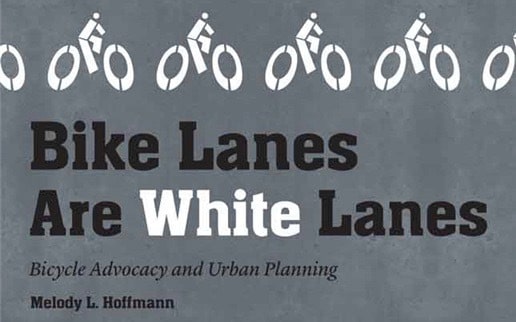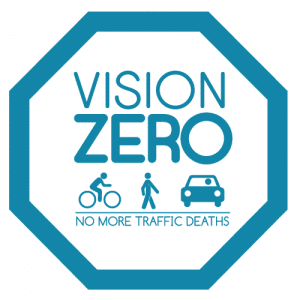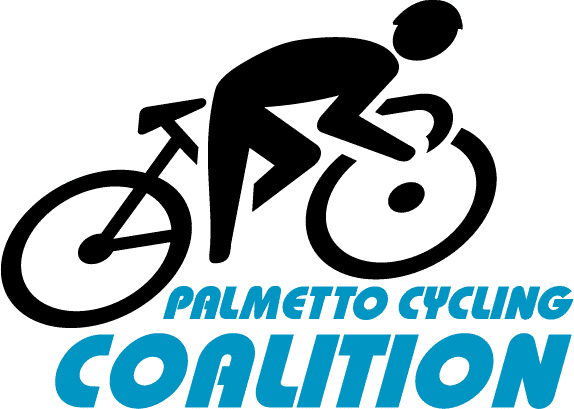Bike Advocacy: Equity and a Paradigm Shift
A post by PCC’s Amy Johnson Ely, originally published in the national BikeLaw blog.
The landscape of bike and street politics has changed. The entire movement is redefining itself, and it is going to be beautiful.
The identity of “bicyclists” has evolved. Our leadership can and should represent more – more than what some might label the senior, white, and spandex-clad crew.

Here are a few stats to start this discussion:
- Twenty-eight percent of South Carolina is African American, and forty-five percent of South Carolina’s bike/ped injuries/fatalities are African American. (US Census 2010 and PCC’s report 2016)
- A low-income person in the USA is twice as likely to die while walking than a high-income person. (Governing 2014)
- An African American child in the USA is twice as likely to die while walking than a Caucasian child. (Dangerous by Design 2014)
- High-income communities are far more likely to have sidewalks than low-income communities (Bridging the Gap 2013)
- An African American person in the USA is five times as likely to be stopped and searched in a traffic stop than a Caucasian person. (NYTimes 2015)
- The fastest growing demographic riding bikes in the USA are African American. (People for Bikes 2015)
The color of our leadership fails to reflect these stats, by a long shot, across all of our non-profit and advocacy communities and associated organizations seeking to move the needle for the safety of those biking and walking, in all levels of government.
We need to have a frank conversation: If your advocacy board, club, or community organization working for safer streets, is not diverse, it should be. Change in leadership – to better represent a decent cross section of the city – is not trivial, because it directs priorities.

Years ago, I heard the phrase in Atlanta “bike lanes are white lanes.” I heard it again recently in Greenville. This problem has persisted and emerged across a state line, and now I am left worried and wondering: At a basic level, who are we improving our safe streets for? And if things have gotten so bad that the bike lanes and facilities we advocate for have become symbols of gentrification (they are), we have and continue to make huge mistakes in how we advocate for safer streets.
Here’s one more example of how equity becomes so important. Think about the last public input meeting you went to. How many white folks did you see? I will guess it was most of the room. Twenty-eight percent of South Carolina’s population is black, with some counties in the majority, so these rooms should reflect that. They don’t reflect our general population because leadership directing these input sessions isn’t effectively engaging the community.

The Vision Zero network recently studied equity intensively. This national network is committed to helping communities reach their goal of Vision Zero — eliminating all traffic fatalities and severe injuries — while increasing safe, healthy, equitable mobility for all. The following lists how they recommend tackling equity, and I’ve paraphrased this list from a 2016 Vision Zero publication:
- Recognize advocacy leadership needs to reflect our society and who is in it, not just who’s in our bike club. Then build equity into internal communications: Bringing everyone within the city bureaucracy onto the same page.
- Be courageous in your conversations, but do your research before you speak. Word choices matter. For instance, traditionally in many cities, there’s a de facto expectation of that every community should get the same amount of money to fix infrastructure or implement programs. The reality, though, is that some neighborhoods have historically less traffic safety infrastructure investments over time, and/or carry far more auto trips and related impacts, so they experience higher rates of traffic violence and deserve more than “equal” attention and resources to address problems.
- Emphasize the safe systems approach: Design & communicate about a more forgiving road system that acknowledges human fallibility, and that does not focus overwhelmingly on punishing unlawful behavior through beefed up enforcement, because that has unintended consequences that prove extreme if local law enforcement has a record of disproportionate enforcement. Enforcement should be a supporting component of Vision Zero, with the primary emphasis on influencing the physical conditions on the streets (roadway design) and policies that influence individual behavior and culture on the front end (such as setting and encouraging appropriate speeds). Enforcement is just one of many tools employed to encourage safe behavior, but it should be a secondary tool relative to the other traditional “E’s” of traffic safety, particularly engineering and education. The goal of enforcement (as in the other areas) is to influence behavior, not punish.
- Facilitate meaningful community engagement: Find the right community partners and move beyond traditional public process. Help your city hire planning consultants with a reputation for better engaging diverse communities. Partner with new partners, reach beyond your comfort zone, listen, and get ready to change your organization’s thinking to reflect that.
- Align the message with the messenger: It’s not just what is said, but who is saying it. Listen to the concerns of constituents and frame Vision Zero issues in a way that acknowledges and addresses those concerns, even if not everything shared is a transportation-only issue. Be willing to talk about more than just Vision Zero, or walking, or biking, or whatever your focus issue is. If gentrification is a local concern, talk with housing/displacement experts in the community first.
GROWING THE MOVEMENT
In May 2017 in Columbia, SC, the Mayor’s Bike & Walk Summit hosted keynote speaker Charles Brown, a Professor of color from Rutgers University and native Mississippian. Mr. Brown studies community development, planning, transportation, and policy, and he focuses on studying urban African American mobility needs, in the biking and walking context. Unfortunately, this is only an emerging field of research, since the trailblazers of the bike and walk advocacy movement, which is still in relative infancy compared to the Civil Rights movement, has traditionally been led by Caucasians. His keynote presentation was revolutionary and transformative because it managed to expand the movement while giving it a necessary punch in the gut.
That gut punch, or reality check, was matched with some recommended changes for us:
- Enable access to power for more people, and you will achieve equity, by enabling better access to safe streets. Incorporate equity thinking into public input meetings, and working to get city staff to take public input meetings to the public (not the other way around) to churches, community centers, schools, etc. Also think about diversifying Bike/Ped Citizen Advisory Committees, often the real nexus of power.
- Education: this is just as important as our infrastructure, especially in educating communities about riding in their streets safely, establishing bicycle parks to teach safe riding, and teaching access to the powers of planning.
- Consultants: Walk up and down your project’s corridors, and talk and listen to all users. Make sure that photo renderings reflect the existing population; otherwise your photo renderings represent the gentrification we don’t want. Bike shares tend to not be in Latino and African American communities: we need to ensure we are being equitable with where we place resources.
- Advocates:
• Connect with people that connect with communities. You can’t help a community if you’re afraid of them.
• Advocate for funding better public engagement before the planning and infrastructure.
• Get real and listen. Realize the realities of economic and social justice in public safety, street lights, disproportionate enforcement, and excessive traffic stops, gentrifying neighborhoods and over-criminalization.
• Bike theft is a big concern. Everyone wants safe places to park their bikes and they don’t want to look like experienced cyclists so that they don’t become victims of theft.
One change I already see in my work as a state bike advocate at PCC is with SC House Bill 3615, the Bicycle and Pedestrian Safety Act. This bill experienced big changes in the past 3 years as it moved through the SC state house, and as we incorporated concerns of the Black Caucus and our quickly evolving advocacy world. We altered the enforcement section, so it carried greater weight on re-education rather than punishment, for traffic offenders committing traffic violence against vulnerable road users. Our next challenge is campaigning for a multi-modal policy at SCDOT that targets notoriously unsafe streets under state ownership, by creating safer bike/walk infrastructure in those communities most reliant on walking, biking, and transit.
I am committed to responding to the changes I sense in the bike advocacy movement. I believe strongly that bikes are tools for so much, and we will only get there by better aligning this movement with our social capital, to build more social capital. Insert equity, advocate better, improve conditions, get more people biking – and road rage decreases, crashes go down, people wave more, waistlines get trim, spirits rise, freedoms grow, pocket books save, etc., etc. When was the last time you could list so many positives about one thing?
Our home is South Carolina, with all its history and community. In the South, we have more to lose if we do this wrong; yet we have more to gain if we do this right. Let’s break it wide open for the greatest number of people.
Footnotes:
- Check out the poem The Body Politic, by Columbia’s poet laurette Ed Madden
- And think about supporting our critical work!
